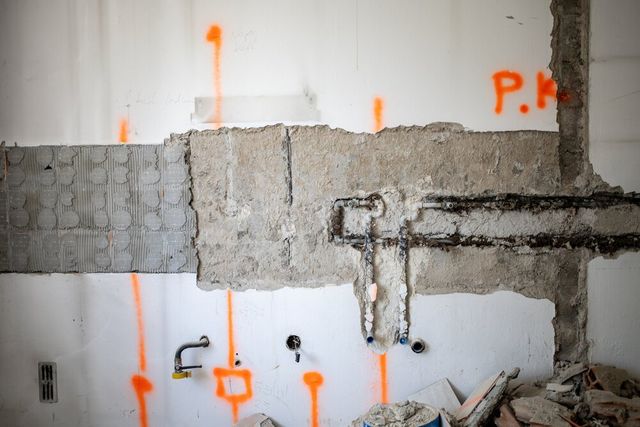Enhancing Task Preparation and Execution Through Advanced Concrete Scanning Techniques
In the world of task preparation and precision, execution and insight are crucial aspects that can make the difference in between success and obstacles. Advanced concrete scanning techniques have actually emerged as an innovative tool established to elevate the criteria of job management within the building and construction market.
Advantages of Advanced Concrete Scanning Techniques

Improved Accuracy in Project Analyses
Enhancing task evaluations with sophisticated concrete scanning strategies dramatically boosts the accuracy and integrity of building and construction evaluations. By employing advanced scanning modern technologies such as ground-penetrating radar (GPR) and 3D imaging, project teams can now get detailed understandings right into the condition of concrete structures, recognizing prospective defects or weaknesses that might not be visible to the naked eye. This boosted level of precision in job assessments makes it possible for building professionals to make even more educated decisions relating to repair work and upkeep methods, leading to boosted general project end results.
Furthermore, the increased precision in job analyses accomplished through innovative concrete scanning methods helps in lessening the danger of unpredicted concerns during the building and construction phase. By proactively spotting covert abnormalities within concrete structures, such as rebar rust or gaps, project groups can address these problems beforehand, avoiding pricey hold-ups and rework later on in the task lifecycle. Ultimately, the enhanced precision in project assessments promoted by sophisticated concrete scanning strategies adds to greater effectiveness, cost-effectiveness, and top quality in construction jobs.
Very Early Recognition of Architectural Challenges
Early detection of architectural obstacles plays an important duty in ensuring the integrity and security of concrete frameworks throughout the building and construction procedure. Identifying prospective problems at a very early stage enables timely intervention, stopping pricey rework, timetable hold-ups, and safety risks. Advanced concrete scanning methods, such as ground-penetrating radar (GPR) and 3D imaging, allow job groups to reveal surprise problems, voids, reinforcement layout disparities, and various other abnormalities that could compromise the framework's security.
By applying these methods throughout the preparation and execution phases, building and construction specialists can proactively address architectural obstacles before they intensify into major problems. As an example, spotting inadequate concrete cover over support bars at an early stage can stop Get More Information rust and architectural weakening in the future - RainierGPR Service Areas. Furthermore, identifying variations in concrete density or thickness can help optimize material usage and make sure uniform strength properties throughout the framework
Ultimately, very early recognition of structural obstacles via sophisticated concrete scanning not only boosts the general quality and resilience of the construction yet likewise adds to a much safer built atmosphere for users and owners.
Improved Safety Measures in Building And Construction
The execution of durable safety and security protocols is crucial in the building industry to minimize dangers and safeguard the well-being of stakeholders and employees. Building websites are inherently unsafe environments, with possible threats ranging from drops and tools malfunctions to architectural failures. To improve precaution, building firms are progressively taking on technical innovations such as wearable tools that monitor workers' essential signs and spot possible health problems in real-time. Moreover, using drones for site surveillance enables normal safety and security evaluations without placing employees in injury's means. Safety training programs have also progressed to consist of digital fact simulations that offer hands-on experience in managing emergency circumstances. In addition, the integration of expert system in safety administration systems makes it possible for proactive identification of possible risks, enabling prompt interventions. By prioritizing security via the consolidation of innovative technologies and extensive training programs, building and construction projects can substantially lower accidents and produce a safe and secure workplace for all included - RainierGPR Service Areas.
Streamlining Project Administration Processes
To enhance operational performance and ensure task success in the building and construction market, a concentrate on improving task administration procedures is important. By applying efficient job management processes, construction jobs can decrease hold-ups, reduce prices, and improve total productivity. One key facet of improving project administration is using advanced innovations such as Structure Details weblink Modeling (BIM) software, which allows real-time cooperation, clash discovery, and precise job organizing. In addition, the adoption of cloud-based project administration systems enables smooth interaction amongst employee, instant access to job information, and the capacity to track progression in real-time.

Verdict
To conclude, the use of innovative concrete scanning methods uses many advantages for job planning and execution. These strategies give better precision in job evaluations, early identification of architectural obstacles, improved security steps in building, and streamlined project management procedures. Including these techniques into project operations can inevitably cause a lot more effective and successful end results in construction tasks.
Inevitably, the enhanced accuracy in project analyses facilitated by innovative concrete scanning methods contributes to greater performance, cost-effectiveness, and high quality in building projects. RainierGPR Service Areas.
To optimize functional effectiveness and make certain job success in the building industry, an emphasis on improving project monitoring processes is important. By implementing effective project monitoring processes, building and construction tasks can reduce delays, lower expenses, and improve total efficiency. By streamlining task management procedures with technology assimilation, clear communication, and data-driven strategies, building and construction projects can attain higher efficiency, cost-effectiveness, and effective end results.
These methods provide better accuracy in task analyses, very early identification of structural difficulties, enhanced safety and security procedures in construction, and structured task administration procedures.